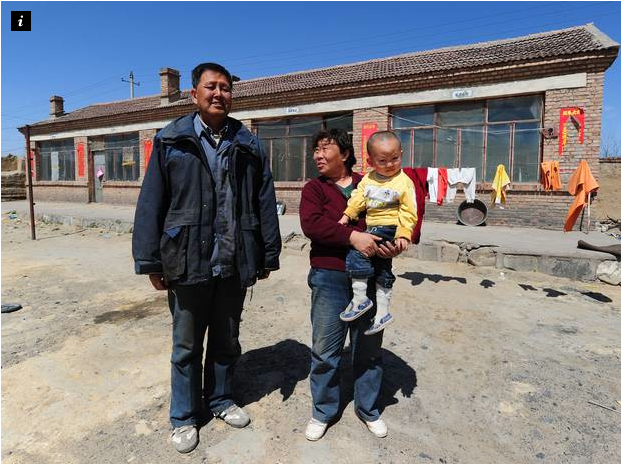A version of this
argument is frequently advanced by the Chinese government to explain its
policies in Tibet and Xinjiang, namely that it is seeking to modernise
and develop a ‘backward’ region. Whilst there has been undoubtedly been
considerable investment in these regions, and the standard of living has
improved for many, there have also been systematic inequalities in terms
of who benefits. In Xinjiang the vast network of state-owned farms and
factories employs virtually no Uyghurs despite the high levels of
unemployment in the region. In Tibet, many rural communities (most of
them Tibetan) have failed to benefit from the prosperity that has
resulted from the massive influx of investment that has accompanied the
millions of people the government has encouraged to move to the
province.
However, it would
be unfair to conclude that the same must automatically be true for the
ethnic minorities in Inner Mongolia. There’s no doubt that coal mining
within the region has led to
a major
economic revival. But how has this prosperity benefitted the nomads?
The government claims to have
resettled more than 500,000 nomads in cities and presents this as a
move ‘into modernity’. The problem is that the nomads have had no say in
the matter. The destruction of the grasslands where they grazed their
animals has given them no choice but to move into government housing in
the cities. Though it has been suggested that the nomads themselves are
to blame for the loss of the grasslands, mining is the principal cause.
Coal requires a lot of water to generate steam and remove
impurities, which in Inner Mongolia has been taken from underground
water systems, depleting the water table and reducing the water
available for agriculture and livestock. To the extent that overgrazing
has been a factor it has been mainly due to large dairy corporations
rather than herders.
It’s also worth
questioning the extent to which the government’s policies truly
constitute economic progress. Whilst China’s economic growth has been
impressive, not just in Inner Mongolia, but throughout the country, it
has come at great environmental cost that will negatively impact the
lives of everyone in the region for generations, not just in ecological
terms but also economic.
Although the
government has provided housing and welfare benefits for the nomads, the
fact remains that most have lost their sole means of supporting
themselves and their families. Many struggle to find another job: mine
workers are mostly hired from other provinces, and many Mongolian nomads
don’t speak good enough Mandarin to find a job in the cities. Rather
than improving their standards of living, forced resettlement has
diminished their life chances.
The loss of
their grazing lands is as much a cultural blow as it is an economic one,
given the centrality of landscape and livestock to their cultures. To
argue that the nomads need to live a ‘modern’ life is tantamount to
saying that that their cultures and traditions aren’t important. The
disregard for nomadic cultures in Inner Mongolia is sadly typical of the
way in which non-Han cultures are usually represented in China, namely
as one dimensional singing, dancing figures in colourful ‘ethnic’
costumes. To the extent that their cultures are seen to have value, it
is in such caricatures intended for the enjoyment of tourists. The
bitter irony here is that this is taking place at the same time that the
roots of these cultures are being destroyed.
Though no
culture can remain static, there are many ways for cultures and
traditional practices to adapt to changing circumstances. For example,
there has been a scheme in Mongolia where herders developed a more
collaborative way of raising livestock that has had good results. If the
real aim of the government’s policies in Inner Mongolia was to improve
the living conditions of its minorities, it could have been done so
without fundamentally altering the basis on which they live. Ultimately,
China’s policies in Inner Mongolian has resulted in both environmental
and cultural destruction- if this counts as modernity, it only does so
in the worst sense of the word.






 Beyond
Great Walls: Environment, Identity, and Development on the Chinese
Grasslands of Inner Mongolia
Beyond
Great Walls: Environment, Identity, and Development on the Chinese
Grasslands of Inner Mongolia China's
Pastoral Region: Sheep and Wool, Minority Nationalities, Rangeland
Degradation and Sustainable Development
China's
Pastoral Region: Sheep and Wool, Minority Nationalities, Rangeland
Degradation and Sustainable Development The
Ordos Plateau of China: An Endangered Environment (Unu Studies on
Critical Environmental Regions)
The
Ordos Plateau of China: An Endangered Environment (Unu Studies on
Critical Environmental Regions)